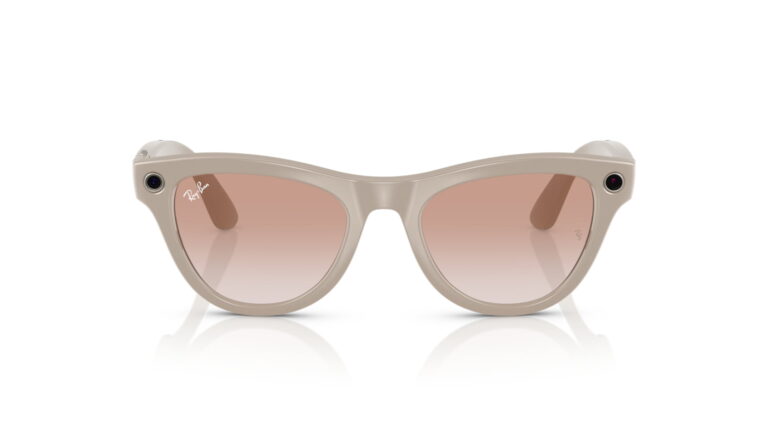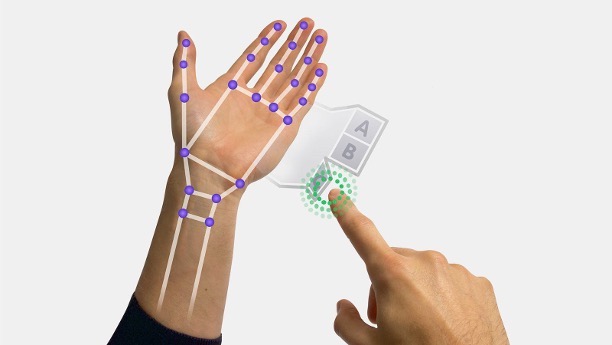
Ray-Ban Meta Smartglasses have been enjoying a lot of good press, and the favorable news just keeps coming. Doing the latest Q3 2024 earning call, EssilorLuxottica, owner of the Ray-Bans brand, confirmed that in the MENA region, 60 percent of Ray-Ban stores are reporting Meta Ray-Bans as their best-seller.
This bullish news follows EssilorLuxottica’s announcement that they are extending their partnership with Meta for another 10 years. Such a long agreement bodes well for the future of XR and wearables, but it’s also exciting for enthusiasts who can expect many more iterations in the future.
Ten years is a lot of time. How Meta Ray-Bans will look in 2034, we can only wonder. But what about the not-so-distant future? Let’s look at clues coming from Meta’s Reality Labs division, as well as upgrades they have already announced and implemented in the previous two generations, and see if we can draw an informed conclusion as to what the next generation (Gen 3) will bring.

Next Generation, When?
Meta announced the Original Ray-Ban Stories (Gen 1) in 2021. Two years later, in 2023, we got Meta Ray-Bans — a much-improved second-generation version. Does this mean Meta Ray-Ban’s Gen 3 glasses should come sometime around September 2025?
Possible, but unlikely. Meta has a history of quickly iterating their successful lines, getting products to where they represent a certain benchmark of quality that Meta is happy with, and then slowing down. The original Quest was released in 2019. Having found success, it was quickly followed by the Quest 2 in September 2020 (just one year later!). However, for the next product in the Quest family, consumers had to wait three times longer, and Quest 3 was not announced until 2023. By drawing comparisons, we can see how a lengthened cycle would make a lot of sense for Meta Ray-Bans, perhaps taking us to 2026 before Gen 3 is announced.
Meta Ray-Ban Gen-3 Hardware
The glasses are powered by an incredibly small 154 mAh module. To put this into perspective, Quest 3 has a 3,640 mAh battery, and smart watches usually carry a 300–500 mAh module.
Ray-Ban’s battery is, therefore, tiny even by smart-wear standards. To make this less noticeable, Meta turned the carrying case into a portable power bank, but usage time is far from optimal even with this aid. To continue expanding Ray-Bans’ functionality, Meta has two options: try to increase the battery size or optimize its efficiency. So far, it has focused on the latter, but if Meta’s Research Lab can find a way to cram a bigger module inside, they will surely do this as well. Either way, we can expect Gen 3 to offer more juice. Consumers like the product and complain they can’t enjoy it longer, so this is a priority.
Bigger storage and better cameras are also a given. These upgrades are low-hanging fruit, as Meta can piggyback off the existing improvements coming in the mobile sector. Such spec-sheet upgrades are great for marketing, too, offering an at-a-glance explanation of why consumers should want to upgrade. Between Gen 1 and Gen 2, camera quality increased by 2.4x and storage by 4x. We can expect this practice to continue.
The current generation uses an AR1 Gen 1 Snapdragon processor. Whether Meta will swap that for a stronger chip is up for debate. A lot depends on Qualcomm. They haven’t announced the AR1 Gen 2 yet, but it should find its way into Meta Ray-Bans once it arrives. In the absence of that, it would not be surprising to see Meta stick with the existing chip.
Meta Ray-Bans Gen 3 Software
Software updates are a steady, iterative process that’s not always tied to any particular generation. For example, Mark Zuckerberg announced a slew of new features at this year’s Meta Connect: live translation, always-on assistant, more intuitive voice commands — and all those upgrades are coming to the existing generation.
The Meta View companion app has similarly undergone many revisions, adding more settings, integrating more closely with the glasses, and notably increasing recording time from 15 seconds to 30 to 60 seconds and now to three minutes. Will the Gen 3 or Gen 4 glasses do away with the small light indicator that lets others know it’s recording? A lot depends on the competition and whether the indicator becomes an industry standard.
Hand Tracking & Eye Tracking
We’re now entering into more speculative territory. At this year’s AWE, Ultraleap impressed everyone with their proprietary tracking sensor by coupling it with a pair of Ray-Bans. Ultraleap’s team discreetly installed the sensor in the middle of the frame, blending it well with the original design, enabling seamless, low-power hand tracking.

This made many wonder if Meta, who has a lot of expertise in this field, isn’t planning something similar. Hand tracking on the Quest 2 and Quest 3 is considered one of the best. In the case of Ray-Bans, this type of tracking can be tricky to implement, but the cameras and the compute are already there. If done correctly, this would be a very impressive upgrade.
Battery life remains a crucial factor, but considering Meta has already okayed an always-on assistant (with always-on cameras), an always-on hand tracking could be the next possible extension. If Meta were to include a dedicated ‘event’ sensor (like the one developed by Ultraleap), they could optimize reliability and battery consumption even further, but at the cost of added weight.
Even further off is eye tracking, which would allow users to control Ray-Bans with their gaze. We are talking here about Gen 4 and beyond. It would require adding inward-facing eye trackers, which is a big ask in a build where every gram counts. On the flip side, this would make interaction with Meta AI much more natural. Current capabilities — like scanning QR codes, memorizing information, and translating text — could be performed just by glancing. It is easy to imagine how this, combined with hand tracking, could significantly enhance the glasses’ potential.

Those eager to know more can look at a research paper by Hyunsung Cho (Cho et al., 2024). Reality Labs sponsored the paper, which, as it happens, delves into eye tracking and audio feedback using screenless XR devices, but it’s important to understand that Meta’s Reality Labs are known to work on many different projects, with only a handful making it to the finish line.
Finally, at this year’s Meta Connect, we heard about Orion AR glasses, which come with a neural input device built by CTRL-Labs. It’s a wristband the size of Fitbit, which can detect micro-gestures (and, with some practice, even users’ intentions). Could this device make its way into Meta Ray-Bans? As a main input device, definitely no, but as a standalone neural interface or peripheral that works with a variety of devices, including Quest — perhaps.
Ray-Ban smart glasses’ success indicates that Meta’s long-term goals are indeed producing tangible results. They now have two successful hardware lines, a growing ecosystem of developers, software and AI solutions, and an appetite to challenge some of the biggest players in the space.
 Mat Pawluczuk is an XR/VR writer and content creator. As with all AR Insider contributors, his opinions are his own.
Mat Pawluczuk is an XR/VR writer and content creator. As with all AR Insider contributors, his opinions are his own.

